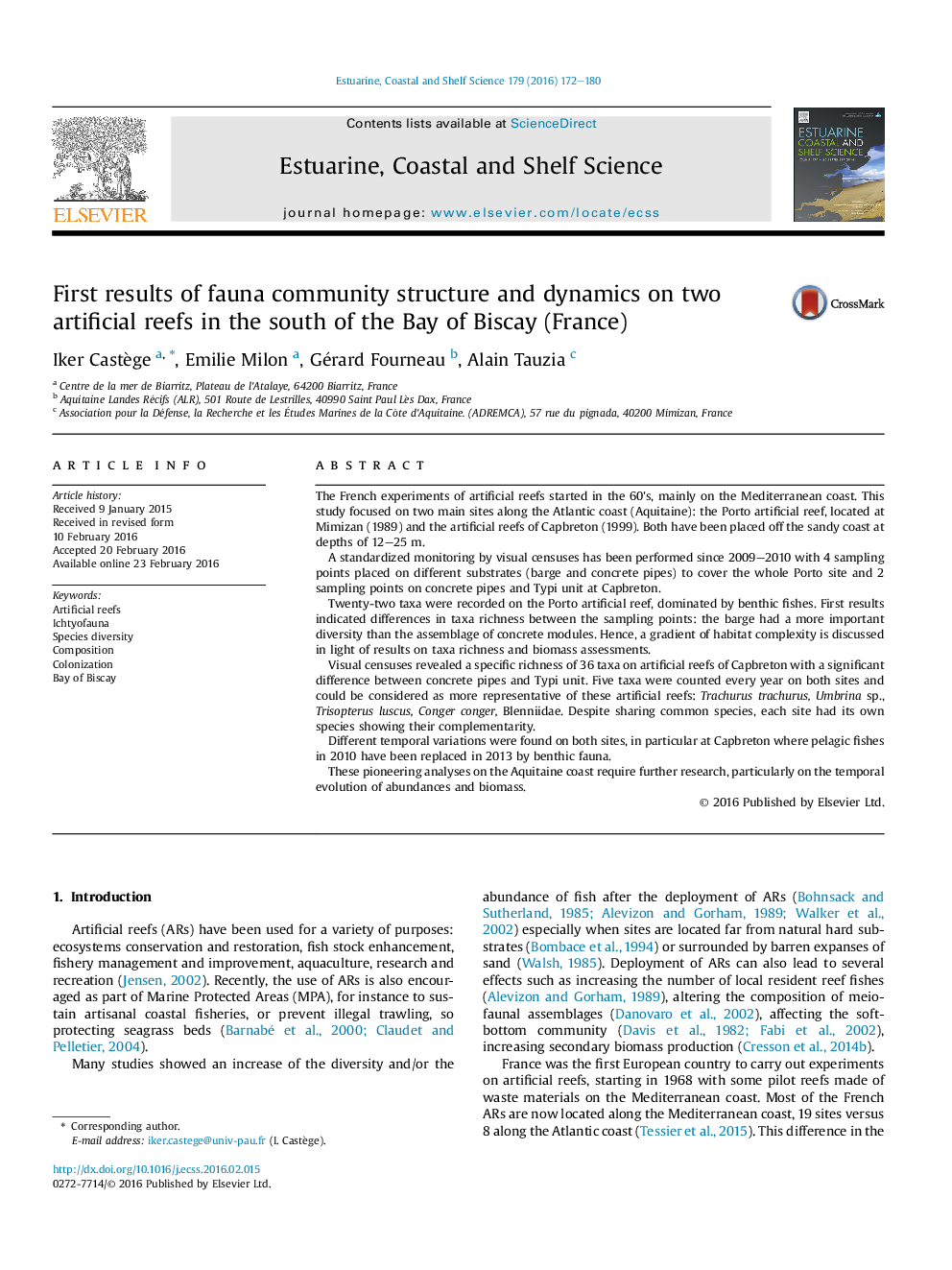| Article ID | Journal | Published Year | Pages | File Type |
|---|---|---|---|---|
| 4539202 | Estuarine, Coastal and Shelf Science | 2016 | 9 Pages |
•Fish communities on 2 artificial reefs (south of the Bay of Biscay) were monitored.•Community fauna was detailed and compared at both sites.•Spatial variations were highlighted among stations and site.•Temporal variation among taxa was observed according to their habitat.
The French experiments of artificial reefs started in the 60's, mainly on the Mediterranean coast. This study focused on two main sites along the Atlantic coast (Aquitaine): the Porto artificial reef, located at Mimizan (1989) and the artificial reefs of Capbreton (1999). Both have been placed off the sandy coast at depths of 12–25 m.A standardized monitoring by visual censuses has been performed since 2009–2010 with 4 sampling points placed on different substrates (barge and concrete pipes) to cover the whole Porto site and 2 sampling points on concrete pipes and Typi unit at Capbreton.Twenty-two taxa were recorded on the Porto artificial reef, dominated by benthic fishes. First results indicated differences in taxa richness between the sampling points: the barge had a more important diversity than the assemblage of concrete modules. Hence, a gradient of habitat complexity is discussed in light of results on taxa richness and biomass assessments.Visual censuses revealed a specific richness of 36 taxa on artificial reefs of Capbreton with a significant difference between concrete pipes and Typi unit. Five taxa were counted every year on both sites and could be considered as more representative of these artificial reefs: Trachurus trachurus, Umbrina sp., Trisopterus luscus, Conger conger, Blenniidae. Despite sharing common species, each site had its own species showing their complementarity.Different temporal variations were found on both sites, in particular at Capbreton where pelagic fishes in 2010 have been replaced in 2013 by benthic fauna.These pioneering analyses on the Aquitaine coast require further research, particularly on the temporal evolution of abundances and biomass.
